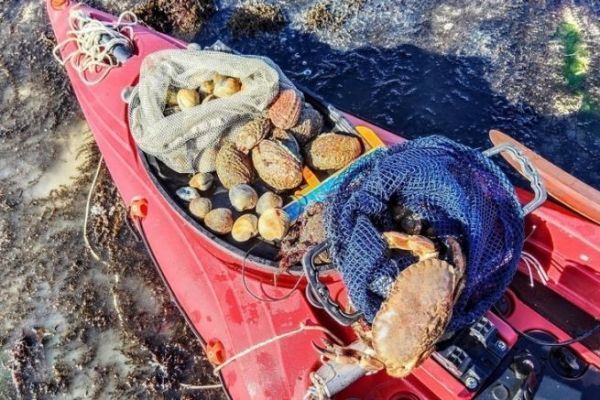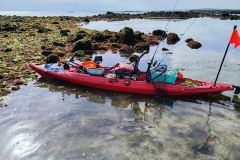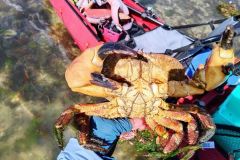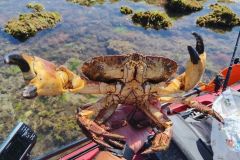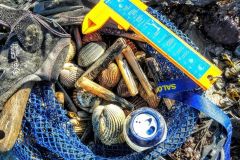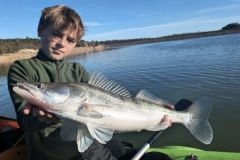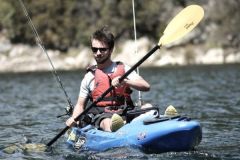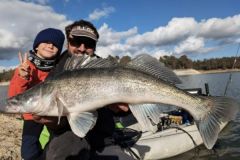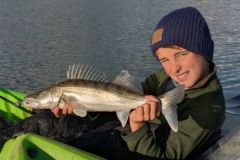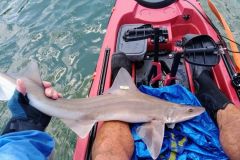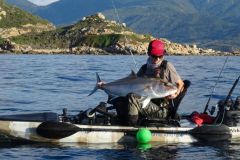First spring tides
At the end of February and the first days of March, these dates were marked on the calendar. These were the first real high tides of 2025. Peaking at 111 on Sunday. The barometer was well up and the winds moderate, at least until the tide shifted and the current reversed. I spread out my outings over 3 days, with good pickings on each day.
As a fishing platform, I took my steppe kayak, an Alboran FX3, which is better able to pass over the shallows between the pebbles and less heavy to drag when I walk alongside. Doing the tides with a kayak makes it safer, as there's no risk of getting trapped by the tide.

First day of picking
On the first day, I'm getting back into kayaking, as it's been a good month since I've been out, and this is a bit of a resumption. The aim is to catch a few shells on this coefficient of 98. I'll be picking up some nice clams, prawns and a few pretty abalone.
As a reminder, in Finistère :
- Clams: 150 individuals/day, minimum size 4 cm.
- Meadows, 100 individuals/day, minimum size 4.3 cm.
- Abalone are 20 individuals/day, with a minimum size of 9 cm.
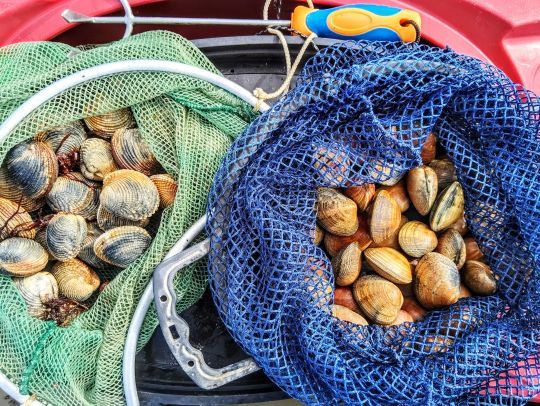
Second day
On the second day, the coefficient is 110, the weather is the same as the day before, the wind is just a little stronger, at around 50 km. The return trip was tough. For this second harvest, we're still picking the same shellfish, with the addition of a few nice étrilles and various other catches such as clams, large white shellfish that look like flattened clams, with a nutty taste.
A reminder:
- Strangles are a minimum of 6.5 cm, which is the limit for personal consumption. Personally, I keep them from 7 cm, and of course, I leave the females. Especially now that they're starting to be seeded.
- Clam is 100 individuals/day with a minimum size of 4.3 cm.
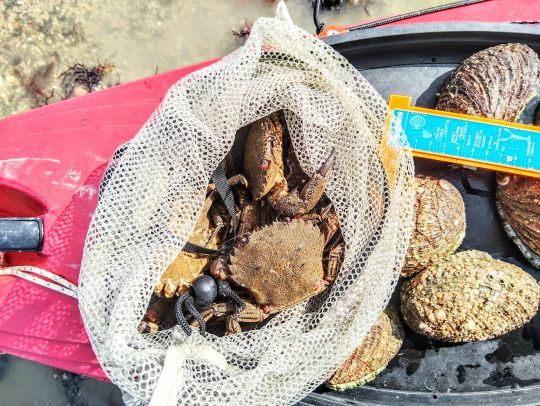
Third day
On the third day, the coefficient is 111. On this day, I'm not alone; I've brought a fellow fisherman with me. As it goes down well, we go a little further. Always the same catches at the start of the harvest, as well as a few varnishes. This is a reddish-brown shellfish, which can get very big, and we'll also be picking up some nice sleepers. Here too, we found some grainy females that we left behind. I'll also make a big male spider.
Small frustration of the outing: under some large boulders, the colleague spots a large blue lobster. We circle the rocks, but despite all our energy, we can't get it out of the depths of its lair. We also see the conger eel, which lives in the same area and is often seen together. The sea is rising and we're up to our waists in water, so we have to turn back. We'll keep these pebbles in mind, as there will be higher coefficients in a month's time...

A reminder:
- The spider crab is 12 cm, and here too, we leave the females grained.
- Crab above the 48th is 15 cm, limited to personal consumption.
- The varnish is 100 individuals/day, minimum 6 cm in size.
- Lobsters have recently grown to 9 cm (thorax).
For these first big tides, the resource is well present and diversified. One black mark, however, is the ban on collecting scallops due to the presence of ASP toxins, which are hard to get rid of.
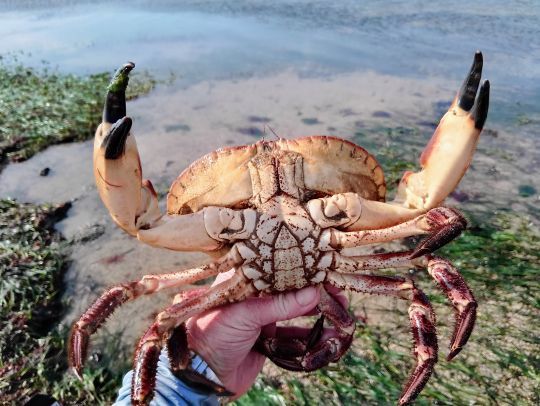
I'd also like to take this opportunity to include the prefecture's recommendations:
- Fishing must be carried out in compliance with measures to protect the marine environment.
- Withdrawals are limited to family consumption.
- Night fishing is still prohibited.
- For some species, catch quotas and minimum sizes must be respected.
Responsible fishing also means observing a few simple rules of behavior: sort and discard undersized catches directly where they were caught, replace turned stones to minimize disturbance to living organisms, and don't catch more than you're going to eat. These are just a few common-sense recommendations that will ensure a good harvest for a long time to come.

 /
/ 